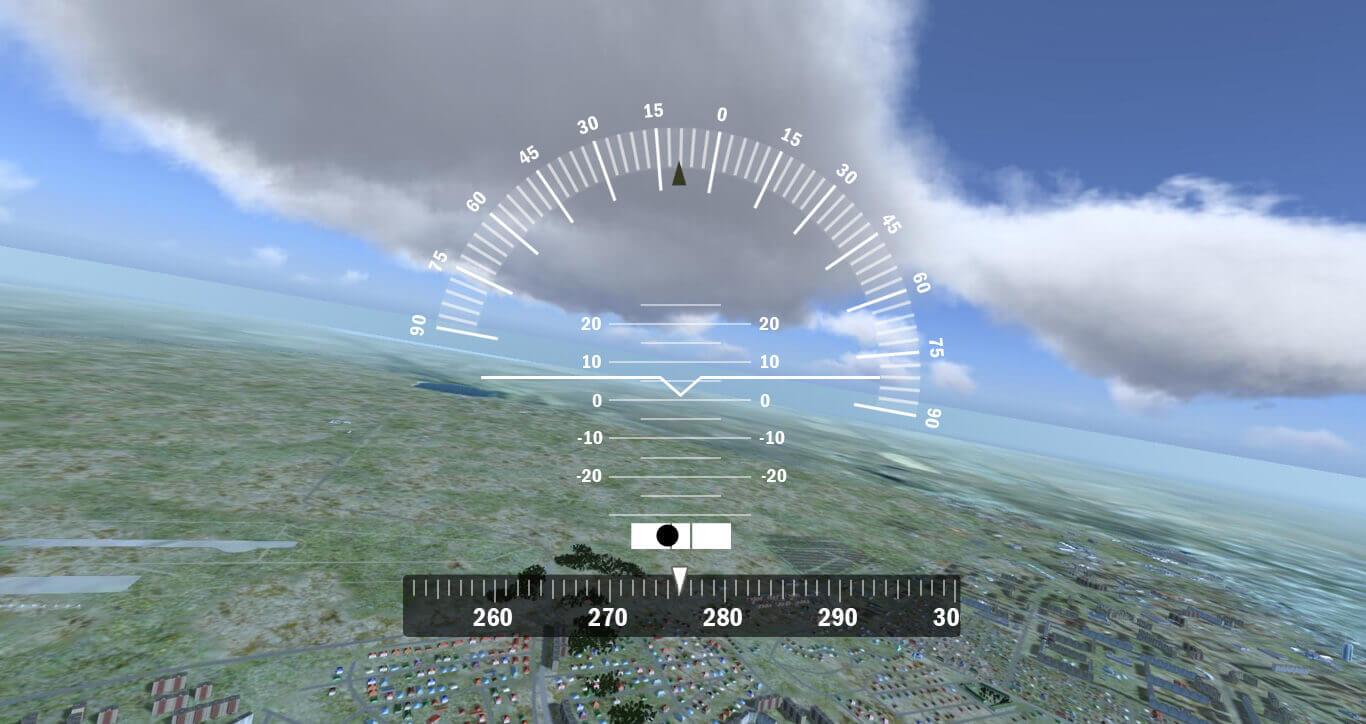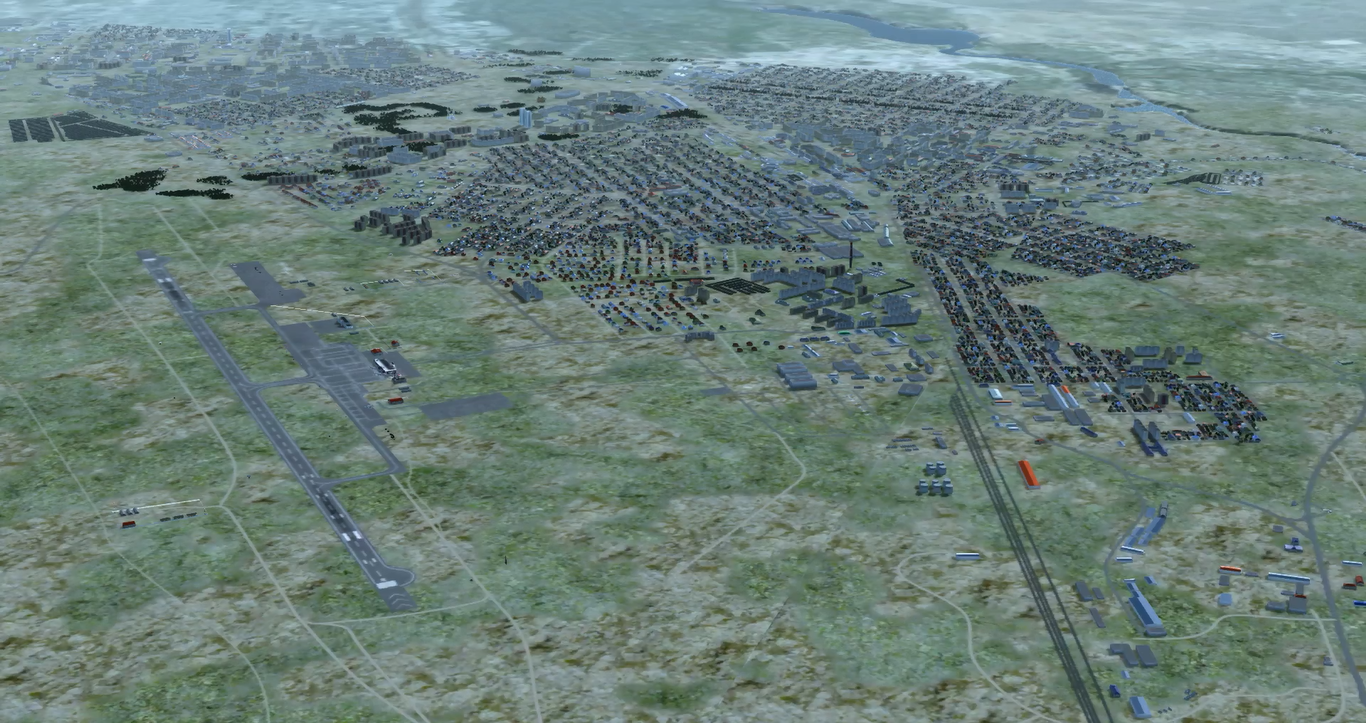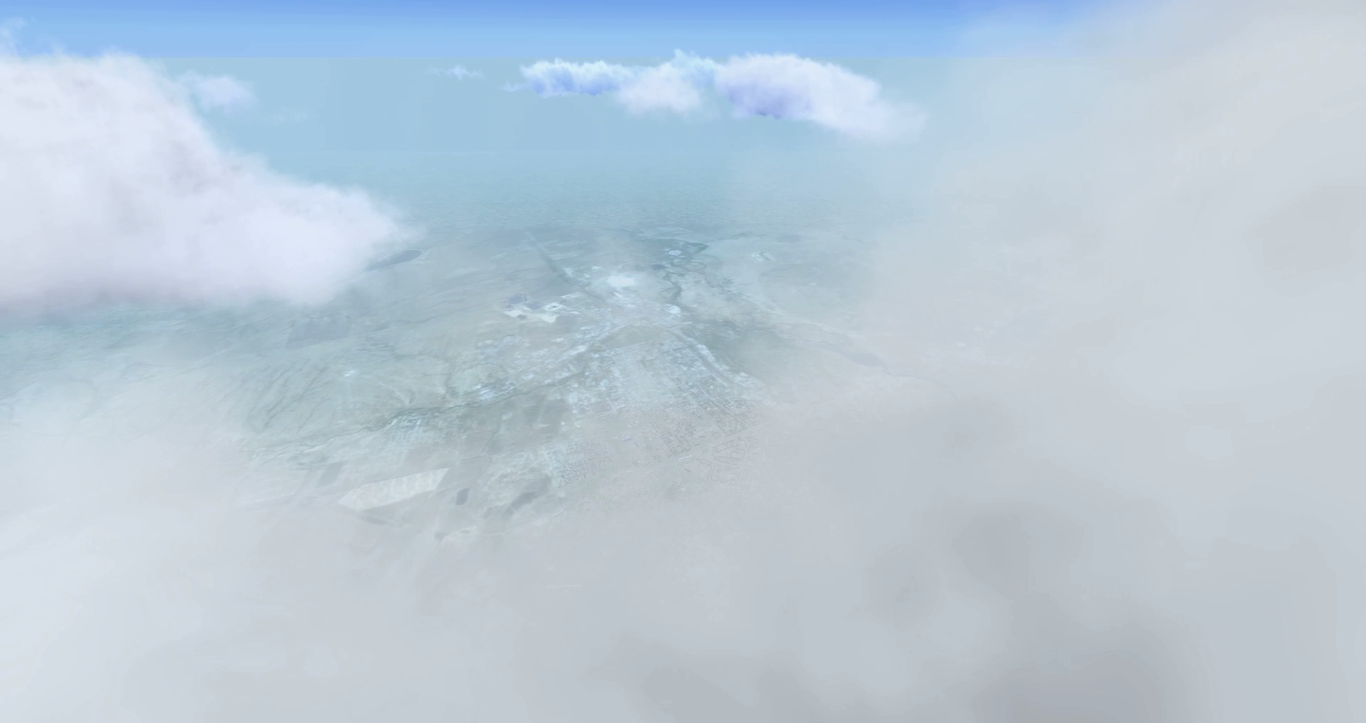Mi-8/Mi-17 helicopter Full Mission Simulator (FMS)
Here is screenshot from helicopter flight using PC. Same code is using for flight using computer appliance simulators. On-screen scales are just a feature for simplifying testing.
Overview
We develop software of Mi-8/Mi-17 helicopter simulator as the main subcontractor of a company that develops computer appliance simulators.
This simulator is a HLA-based computer appliance Full Mission Simulator (FMS) with 6 degrees of freedom motion platform, hardware copy of cockpit with realistic copies of all devices, sound effects and cockpit device illumination system, instructor operating stations, media classroom and spherical display for Outside World visualization.
This simulator is network-based and can act in a shared virtual environment with each other, air traffic control simulator workplaces and other simulators using HLA protocol.
Here you can see flight of helicopter. So, gamepads are used here to control the flight, and helicopter devices are visualized on 2D view. But this code also is using with motion platform and hardware controls interactions
Here is the modeling of On-Board systems for computer based training. If you open this video on youtube you will see the explanations under the clip
Key features of our developed simulator software
Advanced flight simulation development
- Simulation for complex training both procedural and flight operations (turning on, driving, takeoff, landing, flight operating, manoeuvring, technical failures operating, firing, bombing, etc.)
- Simulation of flight dynamics using physics principles, strong mathematical modelling, including aerodynamic modelling based on aircraft parameters. We have subject-matter experts for projecting and implementing such tasks.
- Modelling of atmospheric effects, weather, time-of-day and season conditions for training pilots to operate in different conditions (for example, such parameters as wind, temperature, turbulence, density, humidity, flying on low altitudes affect the aerodynamics of a flight; rain, snow, fog, clouds, sun shine, time-of-day light visual effects are modelled for teaching a crew to operate in different visual conditions)
Network & Interoperability
- Network interactions with other simulators or simulator parts using HLA 2010 Evolved protocol to train aircrew or for training formation flights and execution of formation combat missions. Support of integration with other simulators for performing military cross-branches trainings with different types of simulators.
- Support of HLA integration with air traffic control simulation to teach pilots and dispatchers (or air control officers) to work together.
Working with hardware and hw simulation
- Simulation of on-board systems based on electrotechnical schemes. Our electrotechnical engineers can describe on-board devices model and implement it with our developers. Inner logic, interactions with hardware devices, visualization of devices on Instructor Operating Stations we can implement for a trainee to be able to study working with on-board systems effectively
- Integration with different types of motion platforms (including 6 degrees of freedom platforms), controlling vibration system
- Support of different types of cockpit visualization systems (for example, a spherical screen with a set of stuck together images from different projectors)
- In-cockpit realism development: software for controlling devices illuminations, in-cockpit sounds, outside world related sounds, managing device controls force feedbacks etc.
Instructor operating development
- Instructor operating stations development where an instructor can monitor flight and mission tasks operating, state of on-board devices, environment in 3D and on the maps, introduce device malfunctions etc. Also monitoring of soft for a media classroom showing the current training in different views. Multi monitor workstations are used for providing such information.
- Recording of all distributed activities during simulation for debriefing and after-action review across distributed environment with the possibility to replay the simulation from any point. Action controls for starting, pausing or stopping the simulations.
- Development of mission and environment editors for the preparation of different trainings. Modelling of airport facilities and environment to teach pilots to operate with them
3D, terrain, AI and synthetic environments
- Realistic modelling of a real-world terrain area with automatic approach, using elevation data, digital vector maps, terrain imagery and 3D models typical for the region or automatic terrain generation according to the customer’s needs
- Rich 3D visualization development of huge terrain areas in hundreds of thousands of square kilometers with correspondence of this area to the real world (same elevation, land types, objects etc.)
- Virtual world and AI simulation development. Distributed algorithm that calculates movements and actions of all the units according to mission editor tasks and their parameters. AI simulates complex patterns like decision making, aim selection, shooting etc. We take into account lots of parameters when developing a virtual world: parameters of each ground or air unit (configurable into editors), relief, land types, movement capabilities etc. True physics and ballistic principles are used in the simulation core. nVidia PhysX is used for high-performance of physics-related operations
Geospatial development
- Geospatial related development: using a map for dynamic air and ground environment visualization, for editing environment etc.
Air traffic related simulation
- Virtual air traffic modelling using flight dynamic principles and with terrain following





